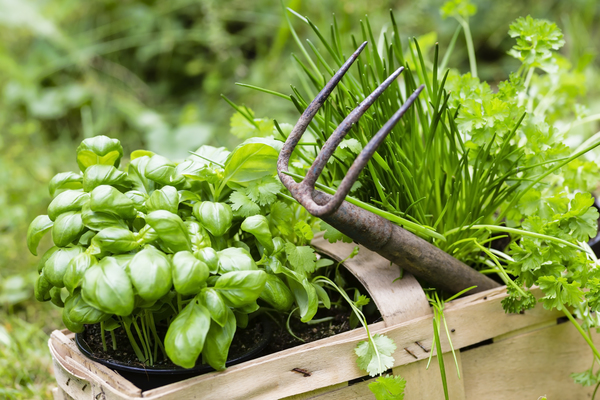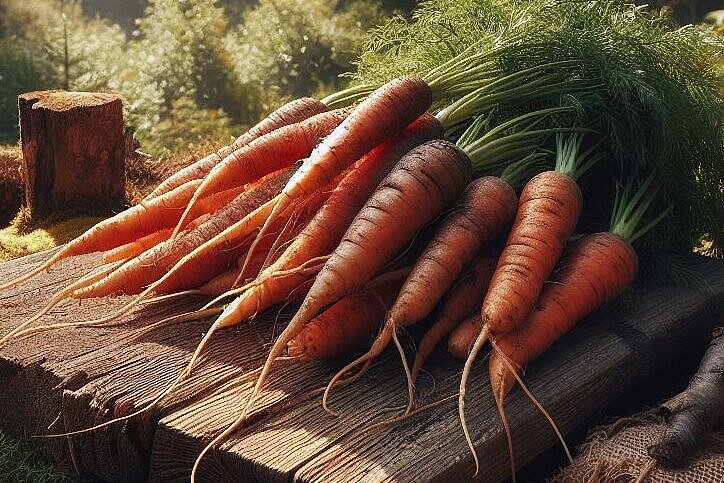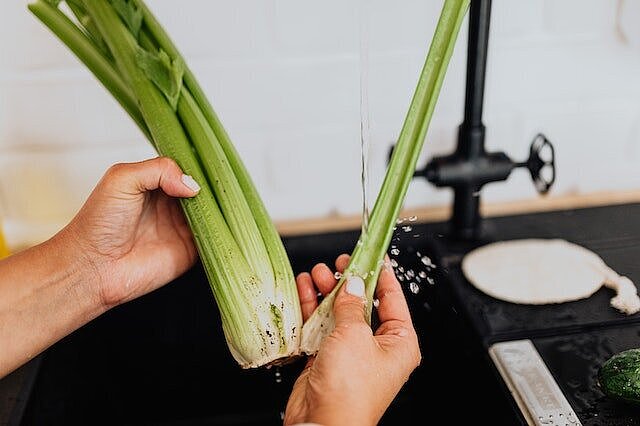Parsley

Parsley is a popular culinary herb that adds a fresh flavor to many dishes. But did you know that parsley can also be healthy for your dog? In this article, you'll find out what parsley is, what benefits and disadvantages it has for your four-legged friend and how best to feed it to him.
What is parsley?
Parsley is a plant from the umbellifer family, which also includes carrots, celery and fennel. It has green, curly or smooth leaves with an aromatic scent. Parsley originates from the Mediterranean region and has been used as a medicinal and aromatic plant since ancient times.
What are the benefits of parsley for dogs?
Parsley has many positive properties for your dog if you give it to him in small quantities. Here are some of them:
- Parsley is a good source of vitamin C, which boosts your dog's immune system and protects against infections.
- Parsley has a diuretic effect, which cleanses your dog's bladder and kidneys and prevents urinary stones and bladder infections.
- Parsley has an antibacterial and anti-inflammatory effect, which is good for your dog's oral health and gums. It also provides fresh breath.
- Parsley can aid your dog's digestion and relieve bloating and stomach discomfort.
- Parsley contains antioxidants that can protect your dog's cells from free radicals and slow down ageing.
What are the disadvantages of parsley for dogs?
Parsley is not dangerous for your dog as long as you give it to him in moderation. However, too much parsley can also have negative consequences, for example:
- Parsley contains oxalic acid, which in high doses can damage your dog's kidneys and lead to kidney failure. You should therefore not feed parsley to dogs with kidney problems.
- Parsley can affect blood clotting and lead to bleeding. Therefore, you should not give parsley to dogs with bleeding disorders or before an operation.
- Parsley can trigger allergic reactions such as skin rashes, itching or breathing difficulties. Therefore, you should not give parsley to dogs with known allergies or stop immediately if you notice such symptoms.
How do you feed parsley to your dog?
If you want to give your dog parsley, there are a few things you should keep in mind to make it safe and healthy:
- Choose fresh and organic parsley that contains no pesticides or contaminants. Wash it thoroughly before giving it to your dog.
- Chop the parsley and mix it into your dog's food. You can also make a parsley tea by steeping the parsley in hot water and then cooling it. However, do not give your dog more than one teaspoon of parsley or parsley tea per day.
Parsley is an aromatic plant from the umbellifer family. It has many benefits for dogs, such as strengthening the immune system and promoting oral health. However, too much parsley can have negative effects, such as kidney damage and allergic reactions. If you give your dog parsley, make sure it is in moderation and wash it thoroughly.
Properties 4
Are you looking for other ingredients with a specific property?
Just click on them to find more.
If you notice any signs of hypersensitivity or poisoning in your dog, you should see your vet immediately. We are not a substitute for a vet, but we try to be as accurate as possible. Every dog reacts differently and we recommend you get a second opinion or consult your vet if in doubt.
Stay healthy and take good care of your four-legged friend!😊
Similar to Parsley
Herbs are plants or parts of plants that are used for their aroma or active ingredients. They can be fresh or dried, whole or crushed, as tea or oil. Herbs contain various ingredients, such as...
Carrots are root vegetables that belong to the umbellifer family. They have an orange color, which comes from the plant pigment beta-carotene. This is converted in the body into vitamin A, which is...
Celery is a plant from the umbellifer family that occurs in various forms. The best known are white celery, celeriac and cut celery. Celery has long, green stalks with leaves that are often eaten as...
Fennel consists of three parts: the bulbous fennel, the fennel green and the fennel seeds. The bulbous fennel is the thickest part of the plant, which looks like a bulb and has a sweet taste. The...



